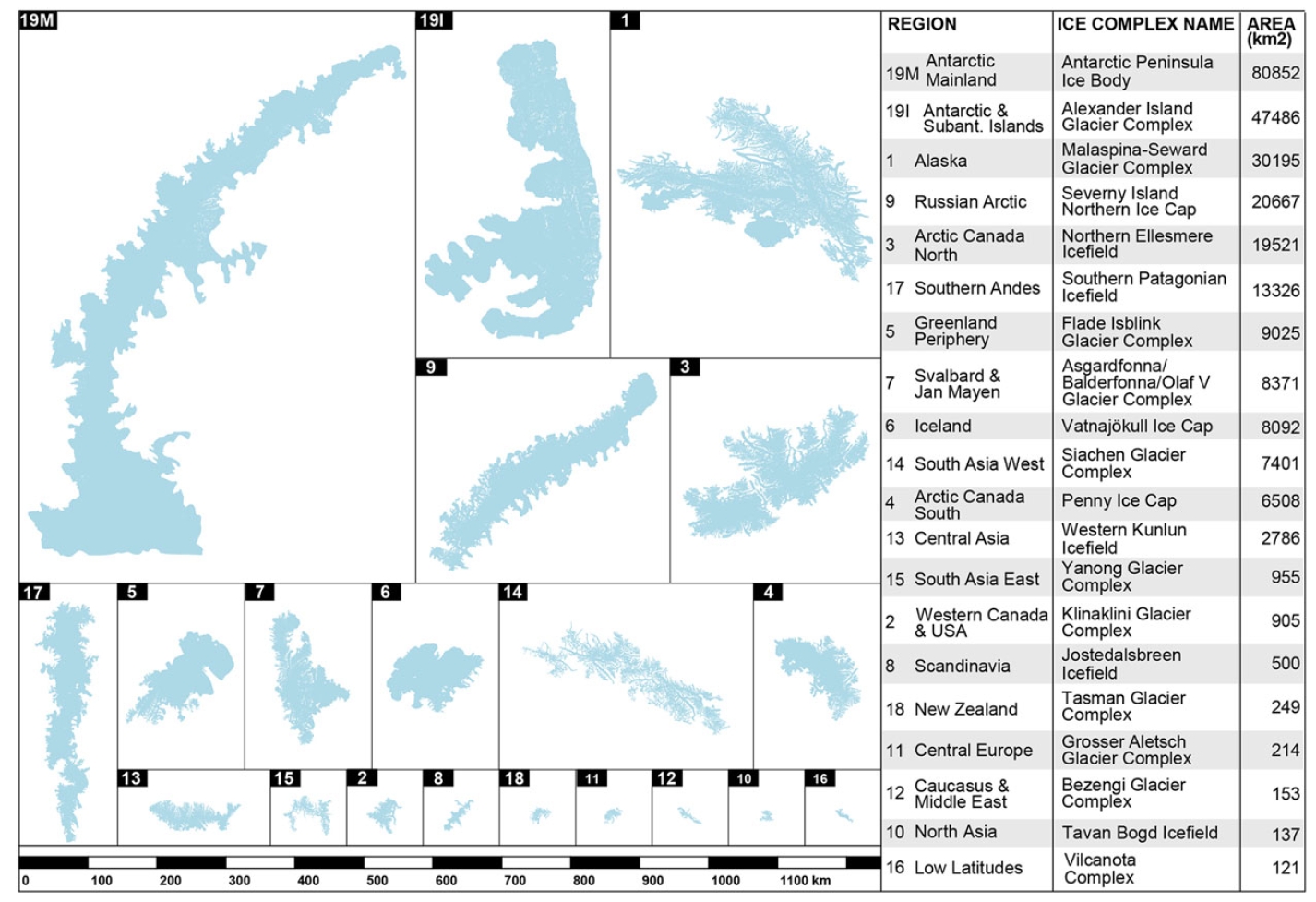Navigation auf uzh.ch
Navigation auf uzh.ch
This question is often asked but not easily answered. It depends on how a glacier is defined and on the availability, quality and consistency of digital glacier outlines at a global scale. A joint paper by the US National Snow and Ice Data Center (NSIDC) and the World Glacier Monitoring Service (WGMS) now provides the answer and was noted as Research Highlight by Nature (2022).
_100x604_web.jpg)
The question of which glaciers are the largest in the world requires clear definitions and a homogenized global glacier inventory. In fact, a first systematic assessment of this question has only recently been published by Windnagel et al. (2022) based on available glacier inventories (RGI Consortium 2017, GLIMS & NSIDC 2005). The authors identify the largest glaciers in the world – distinct from the two ice sheets in Greenland and Antarctica but including the glacier on the Antarctic Peninsula. They provide separate rankings for glaciers and so-called glacier complexes, i.e., glaciers that meet at ice divides such as ice caps and icefields. They show that the largest glacier complexes cover areas larger than 10,000 km2 and hence exceed the size of the largest glaciers by one order of magnitude. These large glacier complexes are located in the Polar Regions and in the Southern Andes (see Table 1). The largest glacier complexes cover areas in the size of smaller countries (such as Bhutan or Austria) but are still orders of magnitudes smaller than the Greenland Ice Sheet (1.7 x 106 km2; Zwally et al. 2012) and the Antarctic Ice Sheet (12.3 x 106 km2; Zwally et al. 2012, Fretwell et al. 2013).
In addition, the study provides the three largest glaciers and glacier complexes for each of the seven continents (see Table 2), as well as for the 19 first-order glacier regions as they were defined by the Global Terrestrial Network for Glaciers (GTN-G 2017). The results by region are illustrated in Figures 1 and 2.
The world’s largest glacier complexes are located in the Polar Regions, and the ice body covering the Antarctic Peninsula (north of 70° S) is by far the largest, with an area of almost 81,000 km2. It consists of about 1,500 glaciers that are sometimes treated as standalone glaciers (Huss and Farinotti, 2014; Huber et al., 2017) or as part of the Antarctic Ice Sheet (Fretwell et al., 2013). The second largest glacier complex covers an area of about 47,000 km2 and is situated on Alexander Island in the Antarctic; this area excludes the ice shelves connected to the island. Next largest are the Malaspina-Seward Glacier Complex in Alaska covering 30,000 km2, followed by the Severny Island Northern Ice Cap in the Russian Arctic at just over 20,000 km2. Finally, in the Canadian Arctic, there are the Northern Ellesmere Icefield, the Prince of Wales Icefield, and the Agassiz Ice Cap, with areas between 18,000 km2 and 19,500 km2. Outside the Polar Regions, the Southern Patagonian Icefield is the largest glacier complex with a size of approximately 13,000 km2.

The world’s largest (individual) glaciers are found in the Antarctic, led by Seller Glacier (7,018 km2) on the Antarctic Peninsula, and then Thurston Island Glacier No. 1 (5,261 km2) and Alexander Island Glacier No. 1 (4,766 km2), both located on Antarctic islands. Outside the Antarctic, the largest glaciers (about 3,000 km2) are Malaspina-Seward Glacier in Alaska followed by Wykeham Glacier South in the Canadian Arctic and Bering Glacier in Alaska.
The authors of the study conclude that ranking glaciers is highly uncertain and depends on the way the ice is divided, which can be subjective and largely depends on the quality of available data. Consequently, the presented rankings are most consistent for glacier complexes and within regions but are subject to larger uncertainties for individual glaciers and across regions.
Windnagel, A., Hock, R., Maussion, F., Paul, F., Rastner, P., Raup, B., & Zemp, M. (2022). Which glaciers are the largest in the world? Journal of Glaciology, 1-10. doi:10.1017/jog.2022.61
The study was carried out as a joint project by the US National Snow and Ice Data Center (NSIDC) and the World Glacier Monitoring Service (WGMS) and is a contribution to the Working Group on theRGI and its role in future glacier monitoring and GLIMS of the International Association of Cryospheric Sciences (IACS). The paper was noted as Research Highlight by Nature (2022).
RESEARCH HIGHLIGHT: Which glaciers are the biggest? Scientists finally have an answer
Nature 608, 650 (2022)